Talking to Pim Koeslag of Frederique Constant, on The Innovative Monolithic Oscillator
Catching up with Pim Koeslag, Technical Director and Master Watchmaker for Frederique Constant
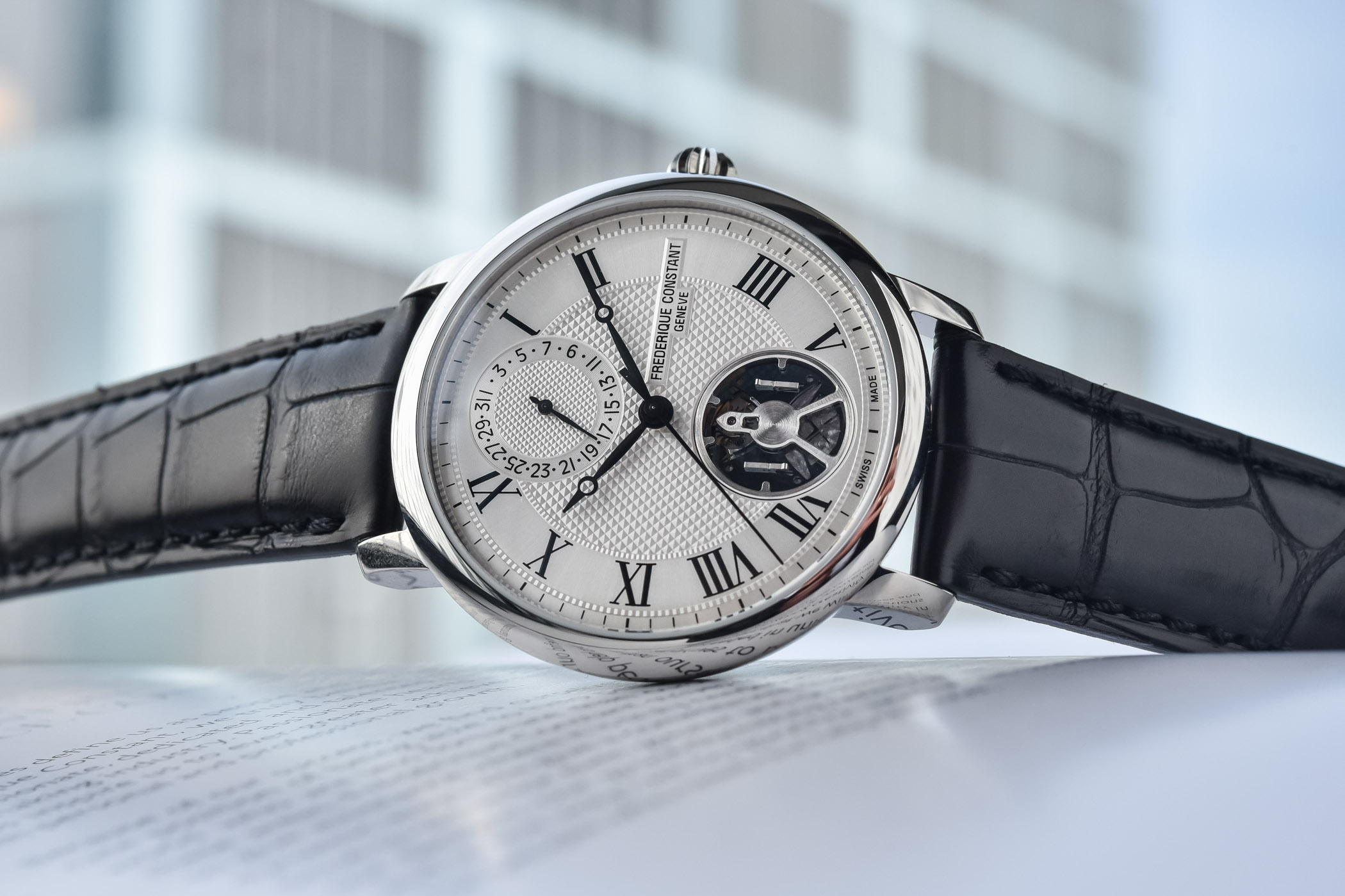
Following the presentation of the Frederique Constant Monolithic Oscillator in March of this year, we chat with the brand’s Technical Director, Pim Koeslag on the concept’s progress. The innovative development relies on the principles of compliant mechanism, along with the flexible properties of silicon, both fairly new to watchmaking but with the potential to revolutionize the industry as we know it. As we are a couple of months on from the initial launch, time to find out where Frederique Constant is at the moment and dig into more details of this amazing feat of engineering.
Just to bring you up to speed again, what Frederique Constant pulled off, in close collaboration with Flexous (an innovative Dutch tech company) is nothing short of a revolution. Replacing the traditional mechanical oscillator in watches, the balance/hairspring couple, means potentially shaking up the entire industry. The traditional oscillator has been the go-to standard regulating organ for the past 300 years.
The Monolithic Oscillator is made of an ultra-thin layer of silicon, only 0,3mm thick, and it’s constructed as one structural component, replacing 26 or so components of a Frederique constant standard assortment. The oscillator’s pivot rather than oscillates, and only to 6 degrees instead of the usual 300 degrees. During development, the speed of the Monolithic Oscillator was pushed to a massive 40Hz, or 288,000vph, with a second hand sweeping perfectly smooth across the dial (80 moves per second).
To understand more about this technology, we sat down with Pim Koeslag (sadly still through the magic of Zoom). As a classically trained Master Watchmaker, it took some time to get used to the technology developed with Flexous. All the more reason to catch up with Pim Koeslag on the current stage of development of the Monolithic Oscillator.
Frank Geelen, MONOCHROME – Pim, good to talk to you again even if it is via a screen. How are you doing, and how do you reflect on the past couple of months after the introduction of the Monolithic Oscillator?
Pim Koeslag, Technical Director and Master Watchmaker for Frederique Constant – Thanks Frank, and very happy to see you again too. I’ve been rather busy as you can imagine. The launch of our new Monolithic Oscillator, and the Slimline Monolithic Manufacture it comes in, has created a storm of response. Really, we didn’t expect it to be so intense, yet in a good way. We’re really happy at where we are right now, even though there is still a very long way to go. The entire team is working hard to keep everything on track.
As a Master Watchmaker with a classical education in watchmaking, how difficult was it to grasp this completely new and revolutionary technology, at least in the watchmaking industry?
Well, it took me quite some effort to get my head around it, yes. Even though silicon is not new in the industry, if you look at the entire history of mechanical watchmaking it is still considered very new. It has been used for about 20 years or so and still new adaptations are being conceived. As you can see with our Monolithic Oscillator of course. It’s a completely new way of thinking for us, even impacting how we work as a manufacture. The changes forced us to break old habits and learn new skills. Not just me, but pretty much everyone involved in the project.
Developments like this take up a lot of time. Could you take us through the stages in the process?
I’ve been heavily involved in this project for three years now and we’ve gone through several phases, together with Flexous of course. The prototyping phase took us well over two years in total. The first challenge was to get the concept of the Monolithic Oscillator working. We wanted it to be perfectly stable at a frequency of 40Hz, which is not easy. Flexous has done extensive calculations on this and after what feels like 1,000 failed attempts eventually managed to find the right thickness and diameter for it to work the way we want to.
Next was the challenge to incorporate it into a traditional mechanical movement and have it keep accurate time. Again very difficult as this has never been done before. It took some adjustments in the existing movement we selected to get things running as perfect as it currently is.
The third phase is perhaps the most tricky one and this took us a long time. The third phase focused on the precision of a movement with the Monolithic Oscillator. We didn’t strive for peak performance in accuracy, at a single given moment, but we wanted to achieve perfect isochronism during the entire 80 hours of power reserve. This was a BIG challenge for us and one in which Flexous proved its worth. The team of engineers working at Flexous proved to achieve isochronism in the full 80 hours.
Surely combining this revolutionary technology with traditional mechanical watchmaking threw a few curveballs your way. What are the biggest challenges in integrating the two?
There were a lot of challenges, not only just by developing the Monolithic Oscillator. There are changes to the oiling, to the torque going through the gear-train, to many individual components. Torque going through a movement of a traditional watch is known territory but working with 40Hz and 6 degrees of amplitude in a regulating organ is not. The outgoing torque from the barrel needed to be determined, in order to calculate the thickness and flex in the Monolithic Oscillator’s beams. To handle the frequency and torque we increased the diameter of the centre wheel and introduced a fourth wheel in the gear-train to increase the speed and reduce the torque.
Regarding lubrication, we found out even the thinnest oils in traditional watchmaking are too thick for us. The slower a wheel moves, the lower the torque, the thicker the oil can be. More torque means more friction and this can provide problems of course. The wheels in the geartrain after the seconds wheel travel at such a high speed, it requires new types of oil. Eventually, this also helped to increase the precision of the Monolithic Oscillator and rethink our assembly process.
Traditionally a watchmaker would use a loupe to oil a movement, which works perfectly fine. With his new technology, we need a microscope to apply the right amount of oil. Too much of the super viscous oils we now use, and it would end up through the entire movement but not where it’s needed.
Another example of how we’ve changed our approach in watchmaking is the need for a literal clean room in the assembly line. We’ve built almost a laboratory-like clean room, complete with an air filtration system, quite similar to an operating room. The slightest speck of dust or dirt can cause huge problems. Once it is installed into a watch case this is no longer an issue, but before that, we need to work as clean as possible.
Also worth mentioning is the escapement wheel. In a normal escapement, the anchor is fitted with pallets, made of synthetic rubies, to catch and release the teeth of the escapement wheel. A big difference in our escapement and escapement wheel is the contact surface is not on the pallet but on the escapement wheel. If you adjust the angle of the teeth on the escapement wheel relative to the pallets fitted to the flexures, you can adjust the amplitude and isochronism.
We’ve had some questions following the introduction of the technology on the ability to service a Monolithic Oscillator by traditional watchmakers. Could you shed some light on this?
In theory, it should be doable. The Monolithic Oscillator is designed to be adjusted and serviced with only little additional training. The way it works is a watchmaker clicks the adjustable weights in place and then is able to regulate it by changing the position of the weights. These parts have a small hook that clicks into the silicon oscillator, something that took a lot of time to optimize. We are utilizing the flexible nature of the material itself.
Three things are important here. Firstly, a watchmaker needs to be able to click it into place. Secondly, it should be easily adjustable to regulate the escapement and finally, it should not break when dropped. Silicon has the tendency to break at sudden impact but Flexous Team has calculated the right thickness in order to survive a 1m drop. We’ve extensively tested this and it works fine as extensive drop tests confirmed Flexous’ calculations. It took a lot of trials and errors though. We literally made a silicon wafer with hooks to find the perfect strength and thickness in order not to break and not be too thick and heavy.
In retrospect, how do you reflect on working so closely with Flexous on this project?
It has been a fascinating journey and to an extent, it surpasses everything we ever knew in mechanical watchmaking. It forces us to rethink our assembly process for instance, not only “just” develop this new technology.
Working on this project from very early on, together with Peter Stas (former CEO & Co-Founder of Frederique Constant) and Nima Tolou (CEO Flexous) I am still amazed at what we’re doing. Peter and Nima had the vision this would be the next groundbreaking step in mechanical watchmaking, and as I reflect on it now I can attest it very much is. We are doing things that have never been done, and realize this goes way beyond what we initially envisioned it to be. We are learning more and more about the capabilities of this technology as we move forward.
To work together with Flexous on this, and blend the engineers’ know-how with our watchmaking capabilities has been extremely rewarding, it really allows us to do great things!
One thing I think is on the mind of many of our readers is how you’ve managed to keep this revolutionary technology relatively affordable?
The focus was to use as many existing parts as possible. We have a wide portfolio of watches and movements and we can use that to build a new movement around this new technology. That’s also why we used an existing barrel as a starting point for the gear train. Work with what you know and start developing from that known reference, that was the general idea.
It keeps things priced to levels people expect from us, and now that we’re able to scale up in numbers, starting with the two limited editions of about 1,700 pieces (810 in stainless steel and blue dial, 810 in stainless steel and silver dial, 81 in 18K rose gold and silver dial) we feel this fits within our existing strategy perfectly.
This is truly fascinating stuff and we applaud you for your perseverance. What does the future hold for Frederique Constant and the Monolithic Oscillator?
Like I said before, we are still discovering new advantages to this technology. At this stage, it makes no sense to develop technology and have it presented just as a concept. We are on the next step in what the technology can do for us and we’re convinced it is the next chapter in watchmaking. It just takes a very long time as it is such a delicate process.
Currently, we are focusing on the assembly and delivery of the first batches of the Slimline Monolithic Oscillator. Besides that, we are working on increasing precision of the movement. We’re gearing up for some very interesting new things, which we can hopefully share with you all later this year. I can’t share too much detail for now, but it is going to be special!
For more details, please visit frederiqueconstant.com.



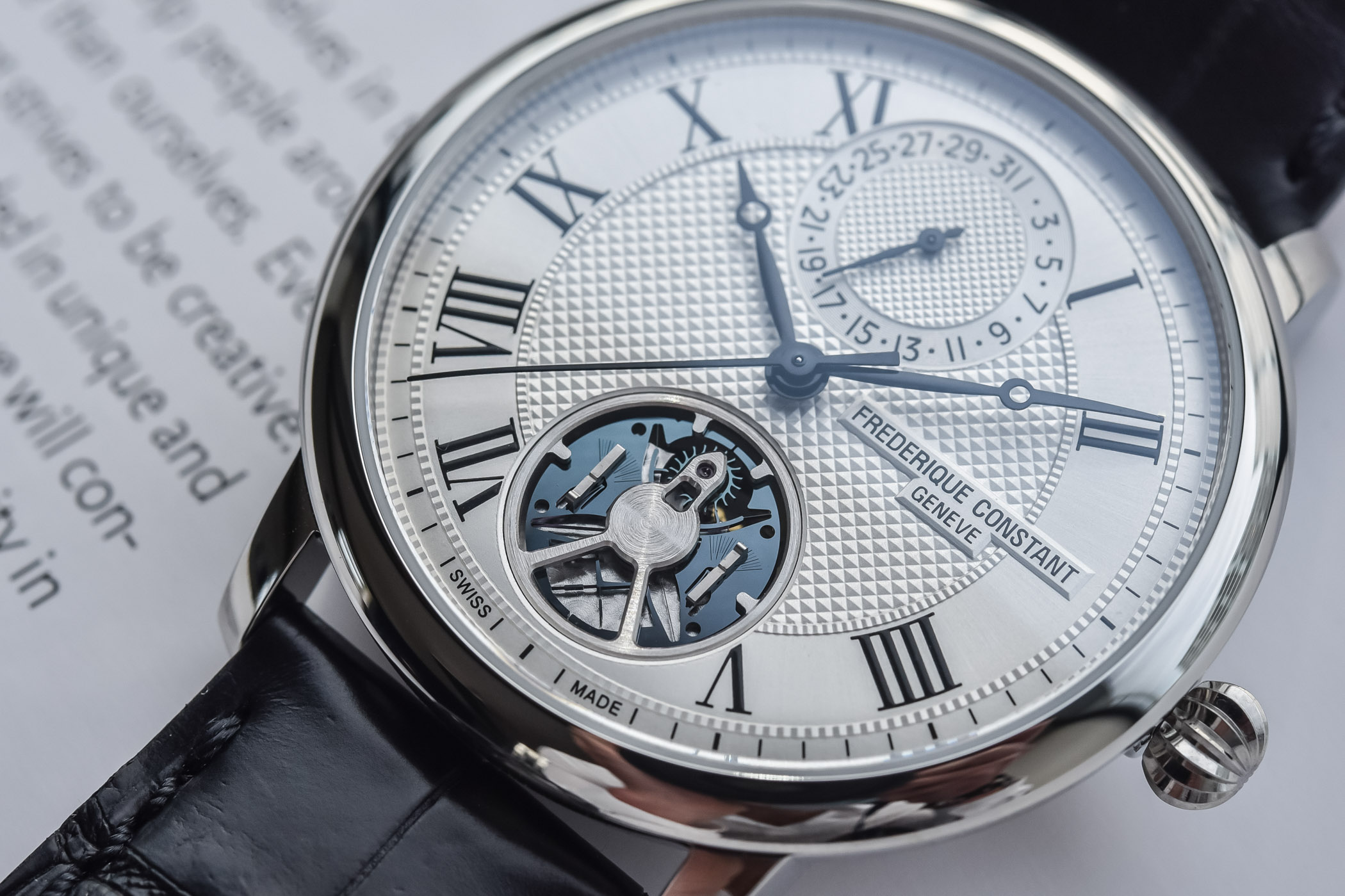
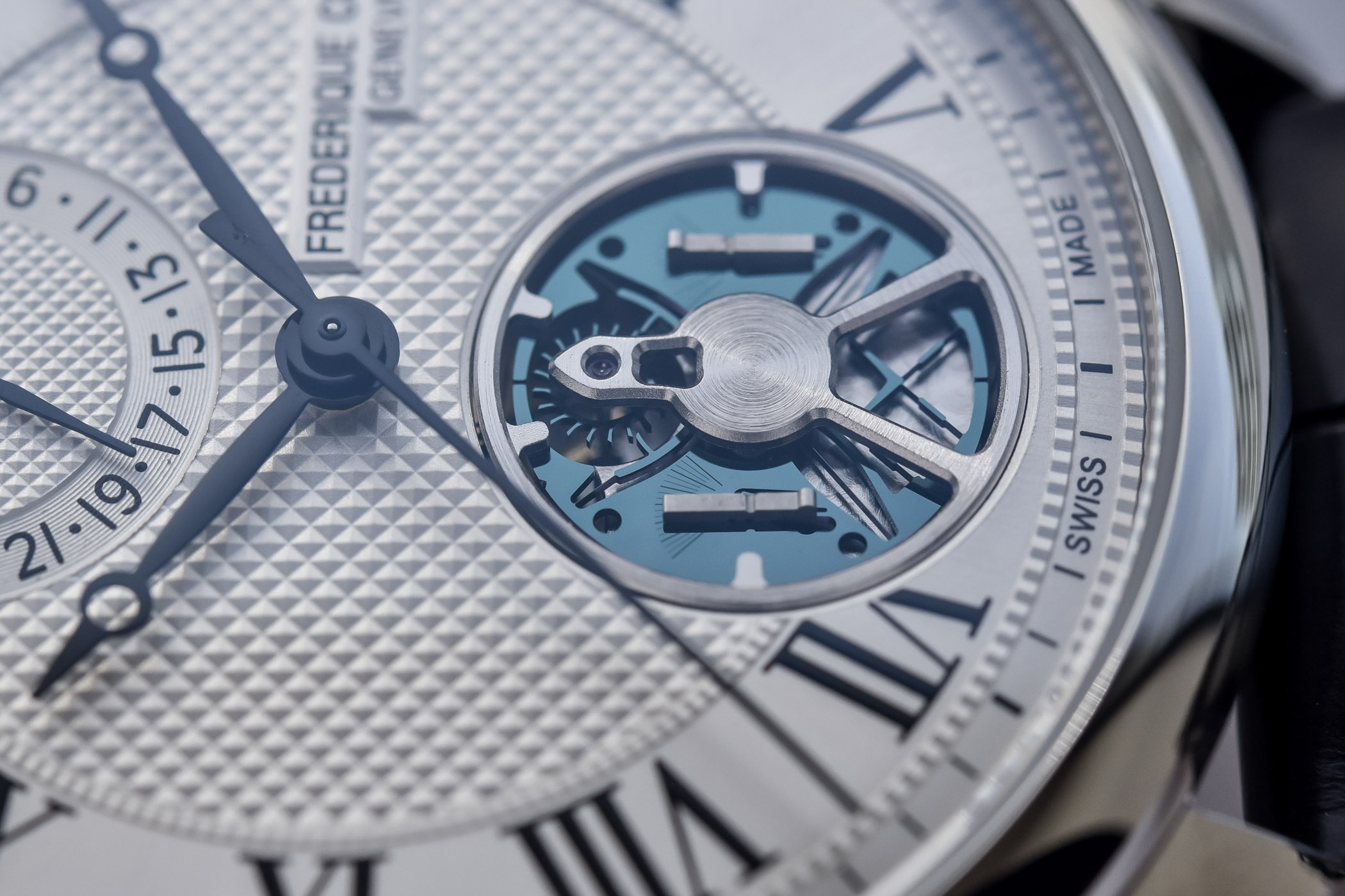
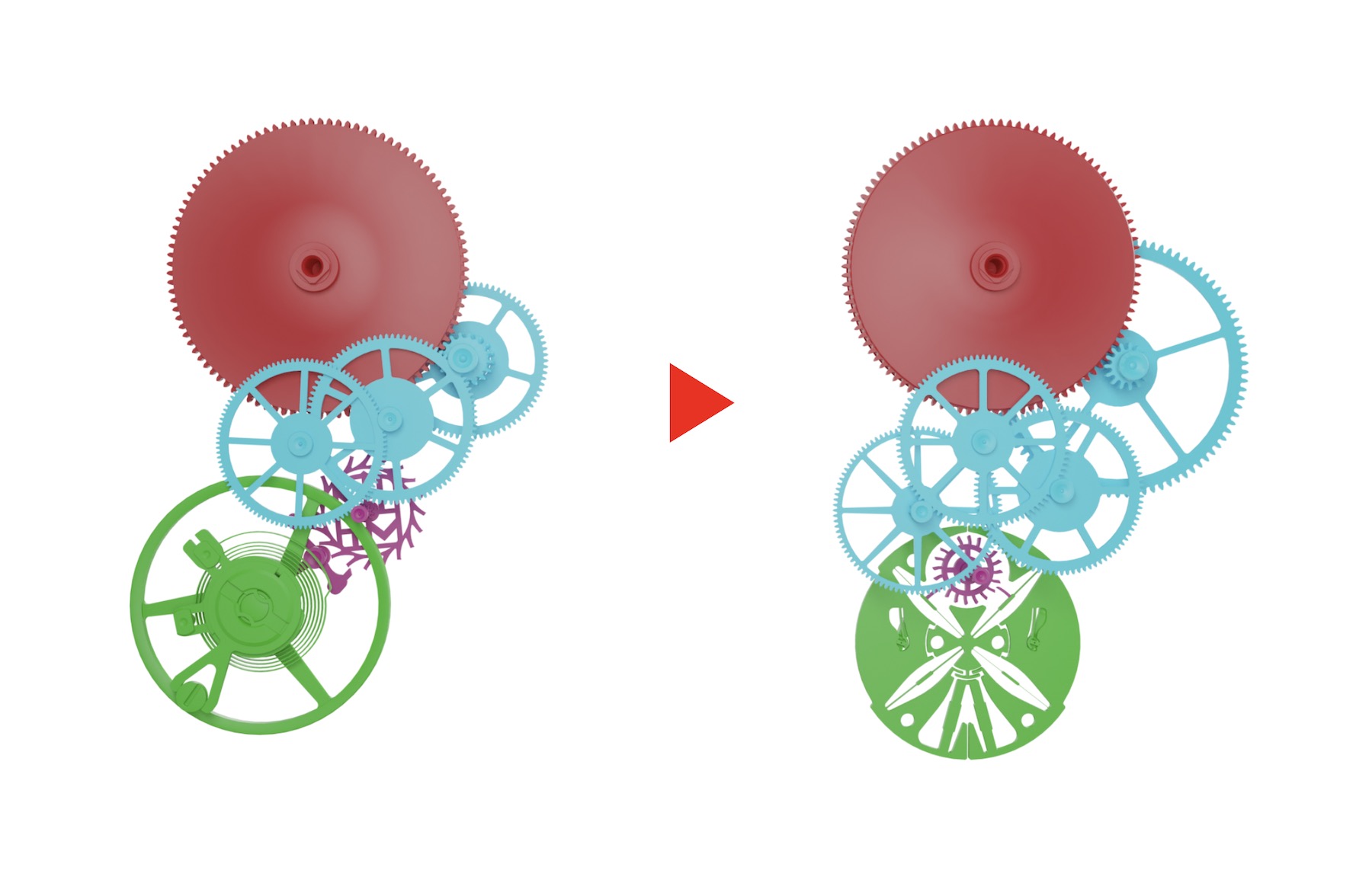
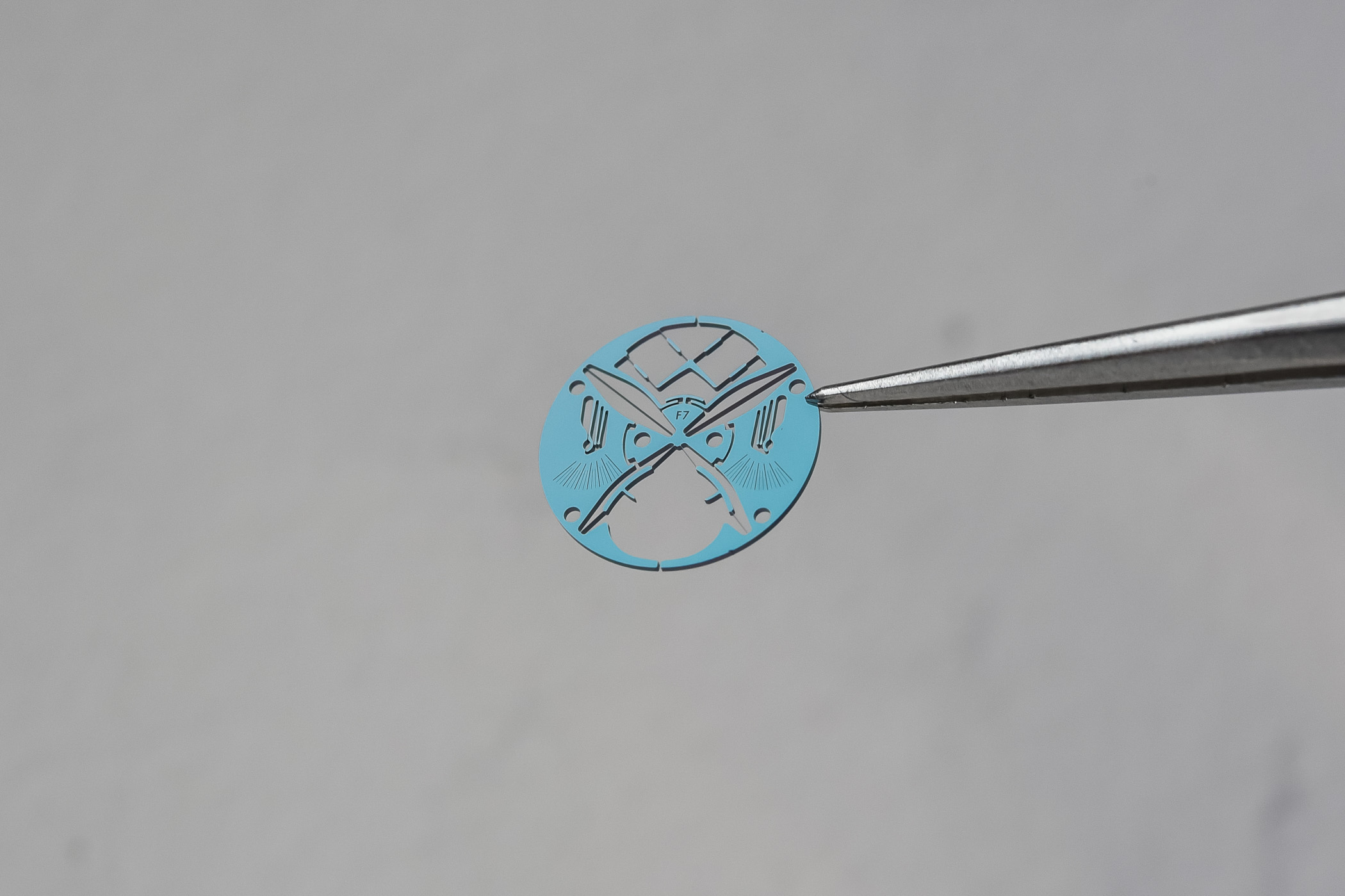


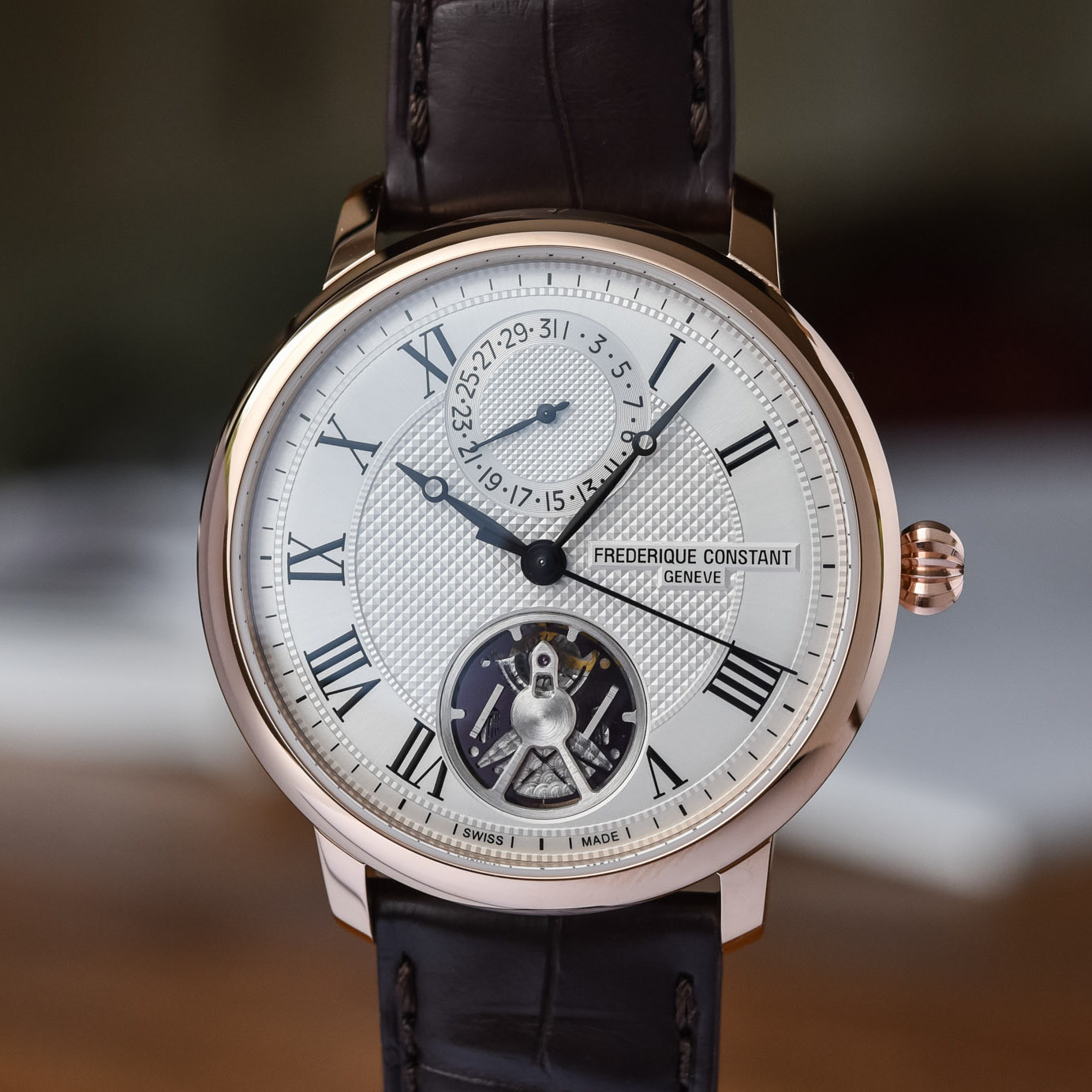
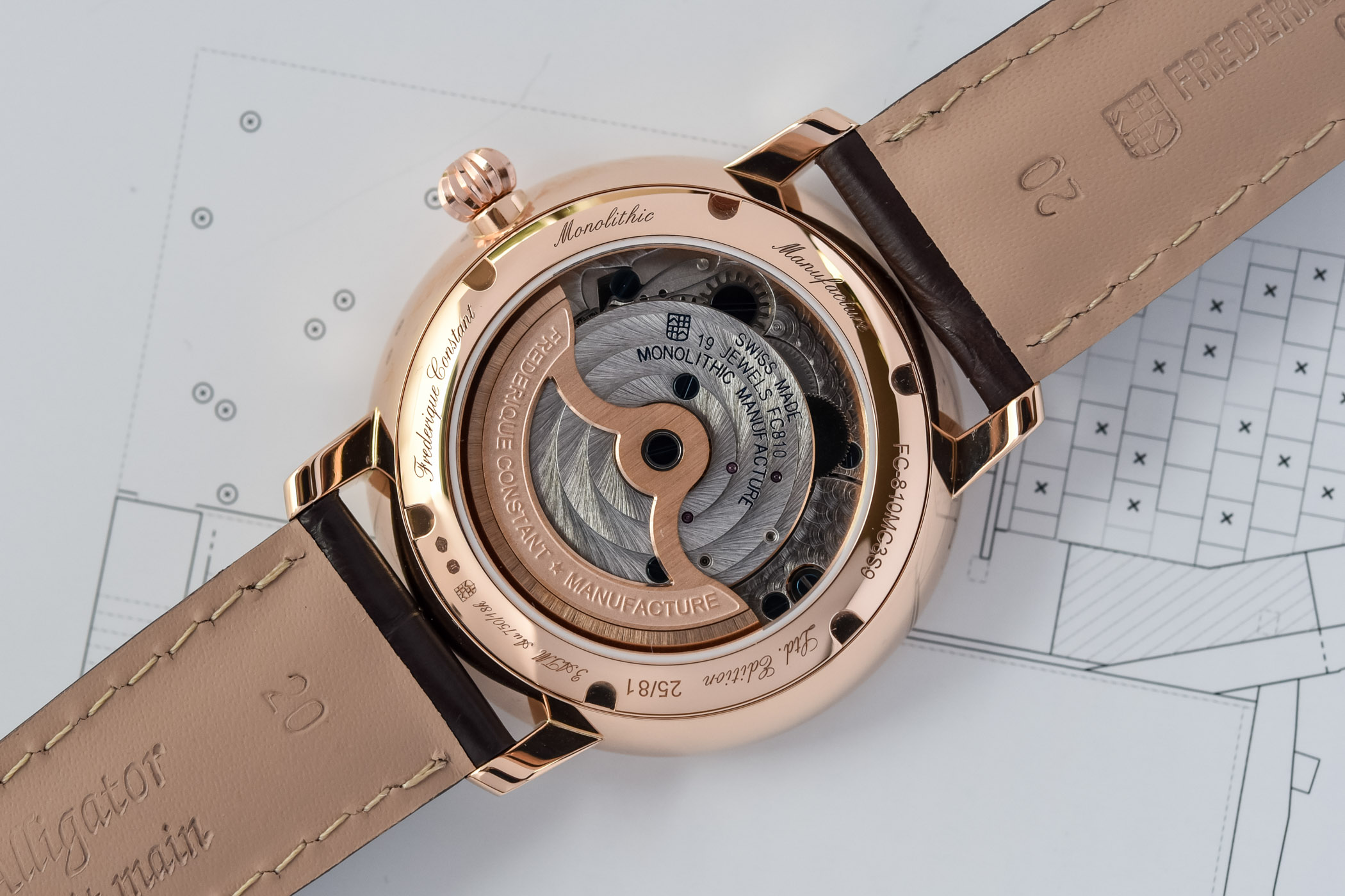
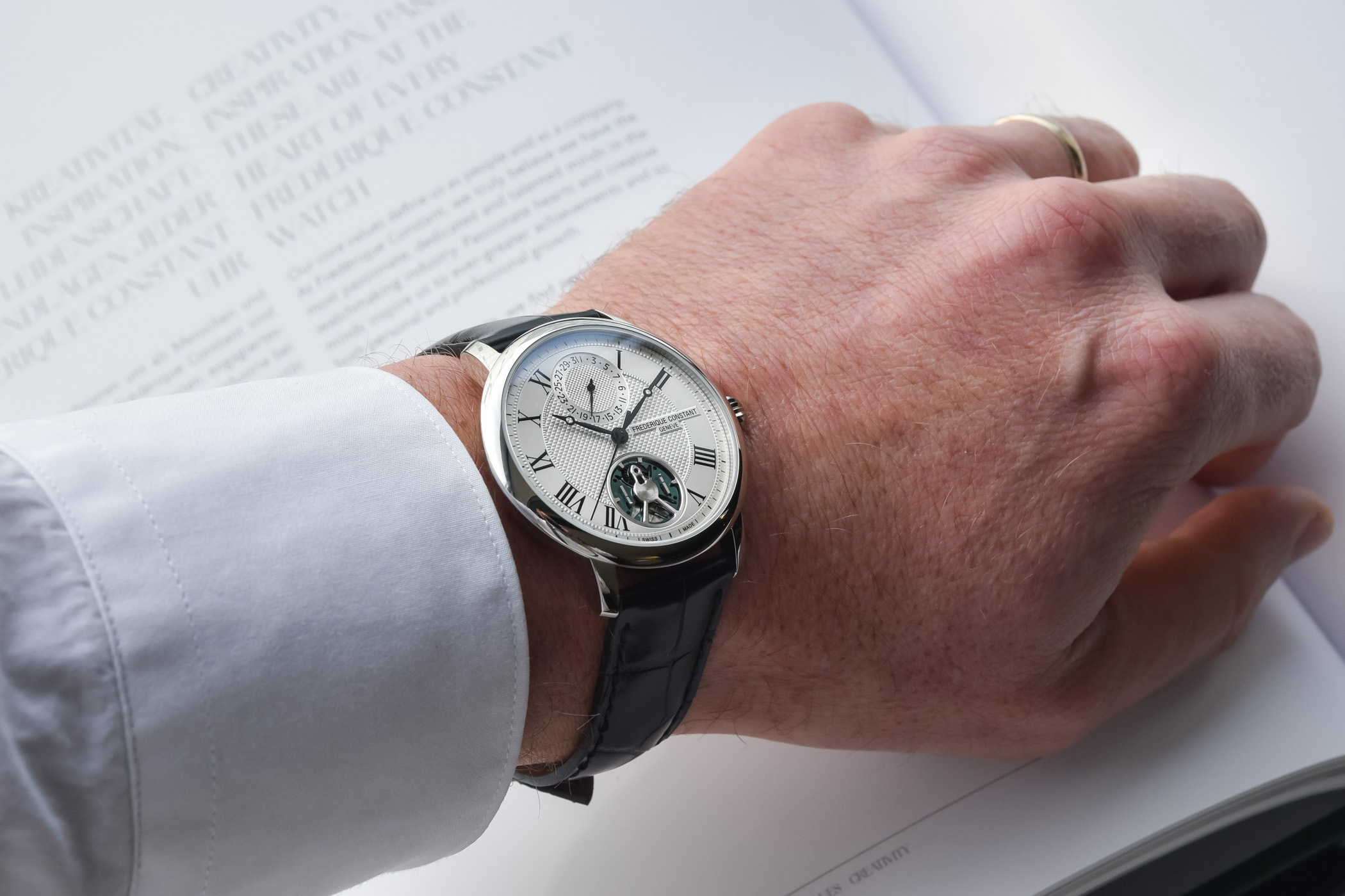



3 responses
Excelente entrevista. Aclaradora de muchos puntos tecnicos sobre el oscilador monolitico. Fascinante acudir de espectador a un cambio tan grande en la relojeria.
Interesting concept. I would like it better if the drop test was a bit more severe, 1m is nothing compared with what some of the competition do. Not something you do deliberately but I dropped my Hamilton a good 3m with no change to the performance.
I enjoyed this part of the article: `Replacing the traditional mechanical oscillator in watches, the Swiss lever escapement”